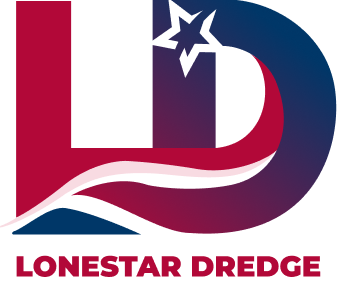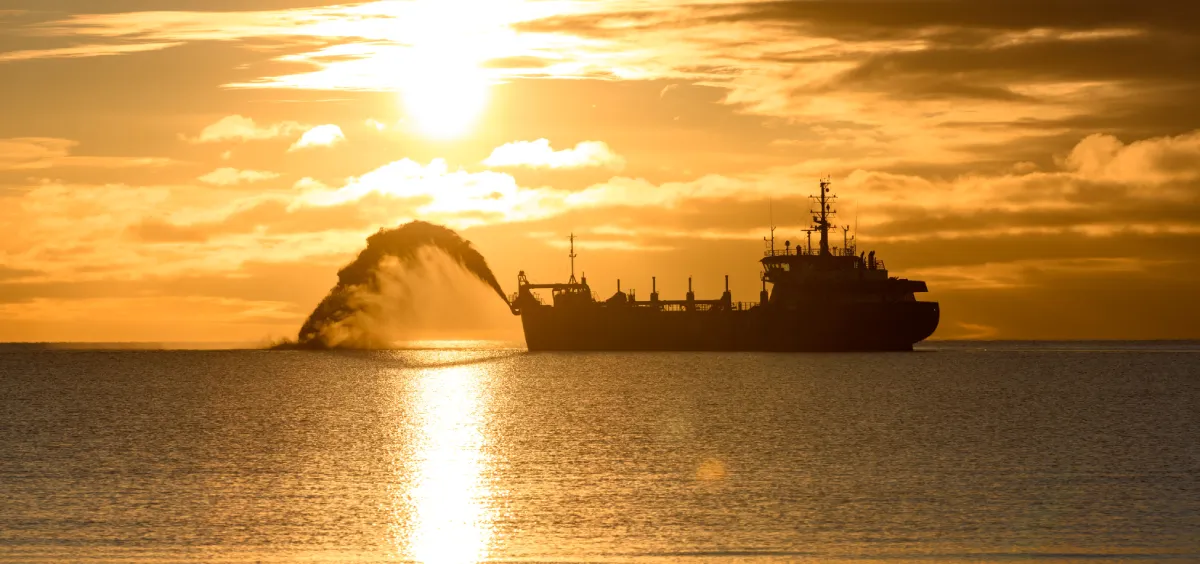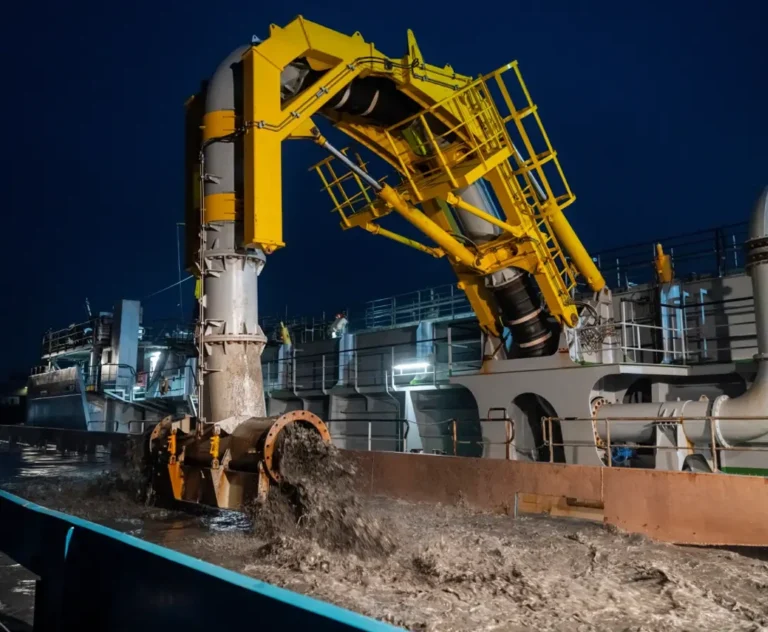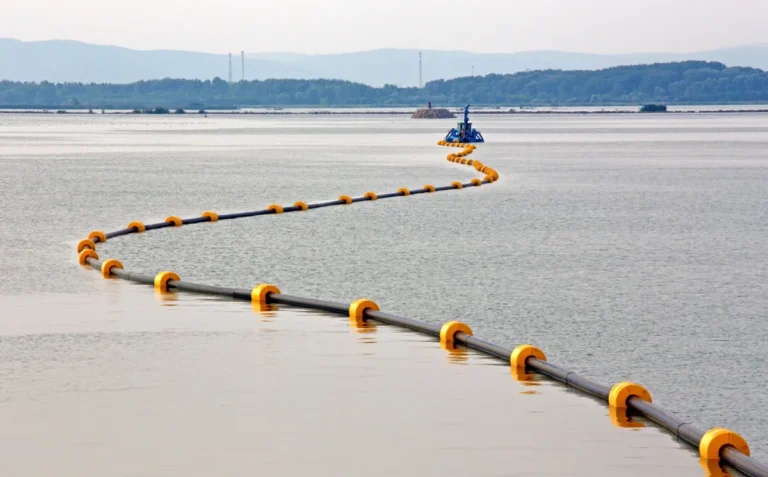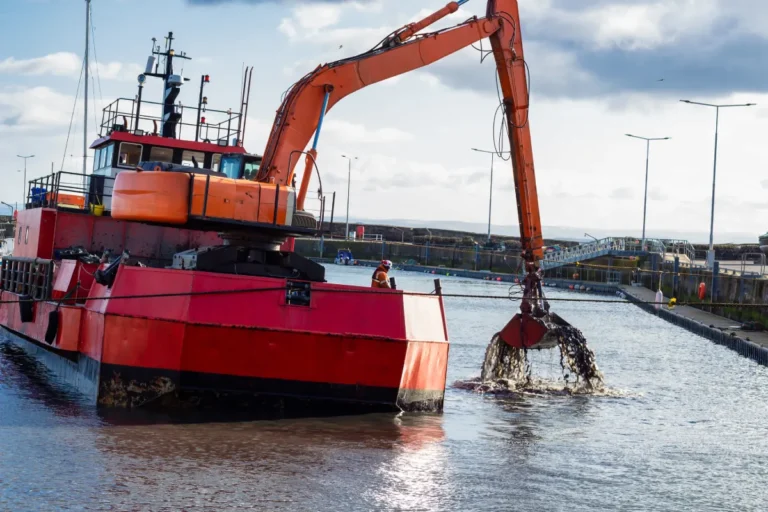Hopper dredging plays a pivotal role in maintaining the world’s navigational channels, ports, and coastal infrastructure. As global trade relies on deeper shipping routes and efficient port operations, hopper dredgers ensure waterways remain navigable by removing accumulated sediment from seabeds. These self-propelled vessels are also essential in coastal resilience projects such as beach nourishment, restoring eroded shorelines, and reinforcing flood defenses against rising sea levels. In offshore development, especially in sectors like wind energy, oil and gas, and submarine cable installation, hopper dredging provides the foundation by preparing seabeds and ensuring stable marine construction zones.
At the core of hopper dredging operations is the trailing suction hopper dredge (TSHD) system. These vessels use long suction arms equipped with dragheads that trail along the seabed, extracting sand, silt, and gravel into an onboard hopper. Once filled, the vessel either sails to a designated disposal site or pumps the material ashore for land reclamation. Unlike cutter suction dredgers or backhoe dredgers, which are often stationary and used in confined or nearshore areas, hopper dredgers excel in open water and deep-sea environments due to their mobility, speed, and ability to transport large volumes of material over long distances.
Their dominance in large-scale dredging projects comes from their operational flexibility, high production capacity, and minimal downtime. A hopper dredger can dredge, transport, and discharge material without the need for extensive support infrastructure, making it ideal for busy shipping lanes and offshore sites. As global maritime logistics expand and coastlines face increasing environmental pressures, hopper dredging remains one of the most efficient and versatile methods for maintaining and developing marine infrastructure.
Inside a Hopper Dredger Vessel
The Dredging Cycle: From Seabed to Hopper to Disposal
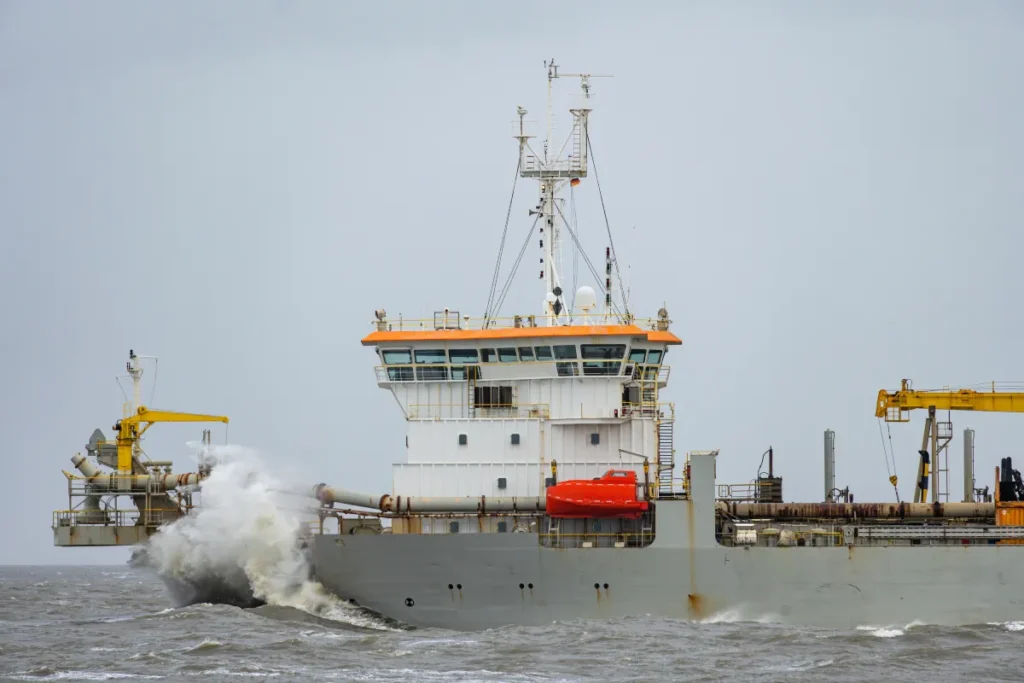
The dredging cycle of a hopper dredger is a continuous, highly coordinated process designed to maximize efficiency while minimizing downtime. It begins with the vessel positioning itself at the designated dredge site using dynamic positioning systems or GPS-guided navigation. Once in position, the suction arms are lowered from either side of the vessel until the dragheads make contact with the seabed. These dragheads are fitted with jets or cutting teeth to loosen sediment, allowing the dredge pumps to create a strong suction flow that carries the sediment-water mixture through the pipes and into the hopper.
As the hopper begins to fill, operators monitor dredged material density and water content using sensors and production control systems. To increase the amount of usable material while avoiding excessive water intake, overflow valves are activated. These allow surplus water to escape through dedicated overflow pipes, retaining more solids within the hopper. This stage requires careful management to balance efficiency with environmental compliance, as uncontrolled overflow may generate turbidity plumes.
Once the hopper reaches its optimal load capacity, the dredging process stops, and the suction arms are lifted. The vessel then sails to the designated disposal or reclamation site. Depending on the project requirements, material can be discharged in one of three primary ways: bottom doors open to release material directly to the seabed; side-casting systems deposit sediment laterally; or the dredged material is pumped ashore through pipelines for land reclamation, beach nourishment, or construction fill. After disposal, the hopper is inspected, and the vessel returns to the dredging site to repeat the cycle. This seamless loop of dredging, transport, and discharge is what makes hopper dredgers highly productive for large-scale, offshore, and coastal operations.
Where Hopper Dredging Delivers the Most Value
Hopper dredging delivers the most value in large-scale marine and coastal projects where speed, mobility, and transport capacity are critical. One of its most significant applications is port deepening and fairway maintenance, where constant sedimentation can reduce channel depth and obstruct vessel navigation. Trailing suction hopper dredgers are ideal for these operations because they can dredge while in motion, store the material onboard, and quickly transport it away from high-traffic ports without disrupting shipping activity.
In offshore wind farm development and subsea infrastructure projects, hopper dredgers are used to prepare the seabed for turbine foundations, cables, and pipelines. Their ability to operate in open-water conditions and handle varying seabed materials—sand, silt, clay, and gravel—makes them indispensable for early-stage marine construction. Land reclamation is another major area where hopper dredgers add value. These vessels transport dredged material over long distances and hydraulically pump it ashore to create new land for airports, housing developments, ports, and industrial zones, particularly in regions like the Middle East, Southeast Asia, and Europe.
Hopper dredging is also essential for beach nourishment and shoreline protection, where sand is extracted from offshore borrow sites and discharged along eroding coastlines to rebuild beaches and buffer against storm surge. After extreme weather events such as cyclones or hurricanes, hopper dredgers are deployed for emergency clearance to restore navigational access, remove debris, and stabilize coastlines. Their self-propelled design, large hopper capacity, and ability to perform continuous dredge-load-sail-dispose cycles give them a distinct advantage in projects that require rapid mobilization and long-distance sediment transport. This combination of efficiency, autonomy, and versatility is why hopper dredging remains the preferred method for high-volume, open-water dredging worldwide.
Maximizing Operational Efficiency
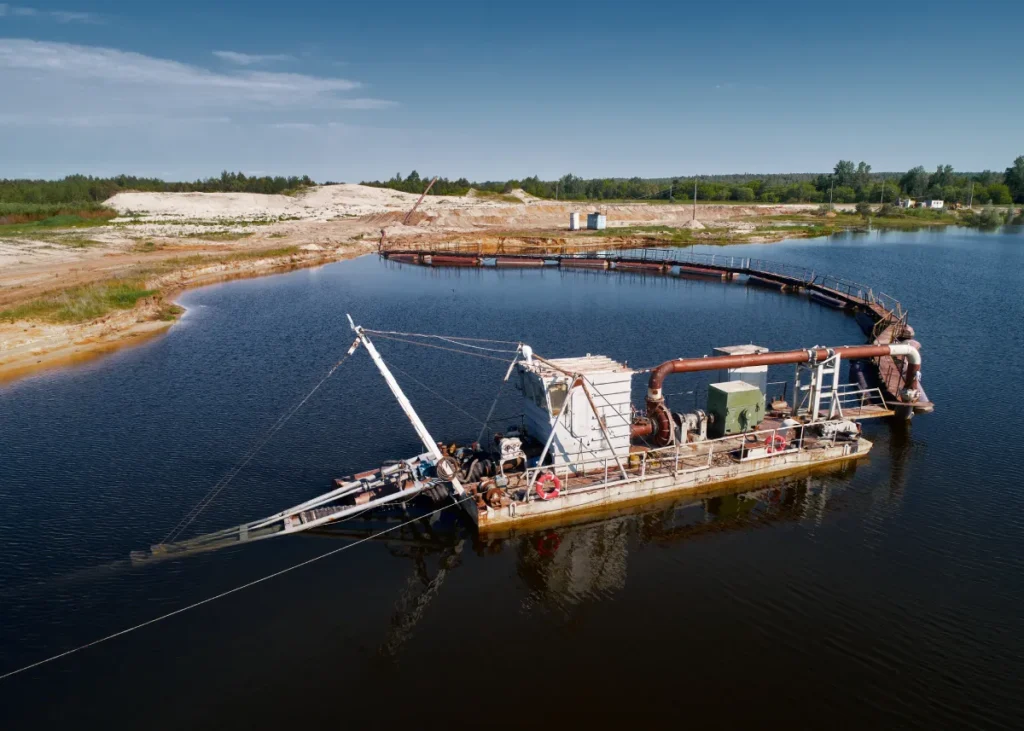
Operational efficiency in hopper dredging depends on how well each stage of the dredging cycle is optimized—from sediment intake to material discharge. Key performance indicators include dredging depth, suction power, pump capacity, sediment density, and the duration of each load-sail-discharge cycle. The shorter the cycle time and the higher the load density, the more productive the operation becomes. Modern hopper dredgers use automation and real-time monitoring systems to measure parameters like draghead pressure, pump vacuum levels, and hopper fill percentage, allowing operators to make immediate adjustments for better output.
Fuel consumption and sailing distances also have a major impact on operating efficiency. Optimizing dredge routes, reducing idle time, and maintaining consistent dredging speeds ensure better fuel economy and lower project costs. Some advanced vessels use hybrid propulsion or energy recovery systems to minimize fuel usage during low-power operations. Additionally, hopper volume plays a crucial role—larger hoppers allow more material per trip, but if disposal sites are far from dredging zones, travel time can offset the benefits.
Maintenance planning also determines long-term dredging efficiency. Dragheads, pumps, and suction pipes are exposed to abrasive materials and must be inspected regularly to prevent wear-related failures. Predictive maintenance technologies, including vibration sensors and digital twins, help reduce downtime by identifying issues before they escalate. Overall, operational efficiency in hopper dredging is achieved through a balance of optimized cycle times, energy management, advanced monitoring systems, and proactive equipment maintenance.
Breaking Down the Costs of Hopper Dredging
The cost of hopper dredging projects is influenced by a combination of operational, equipment, environmental, and logistical factors. One of the largest expenses is vessel ownership or chartering. A modern trailing suction hopper dredger represents a multimillion-dollar investment, and daily charter rates vary significantly depending on hopper capacity, dredging depth capability, and onboard automation systems. Operating costs further include fuel consumption—often the single highest recurring expense—along with crew wages, insurance, maintenance, and port or disposal site fees.
Project-specific variables also play a major role in determining total costs. The distance between the dredge site and the placement area directly affects fuel use, cycle duration, and vessel productivity. Sediment type matters as well—dredging compact clay or rock requires more power, wears out dragheads faster, and increases maintenance expenses compared to sand or silt. Environmental compliance adds additional costs, such as turbidity monitoring, environmental impact assessments, marine disposal permits, and mitigation measures like silt curtains or reduced overflow operations.
Budget planning must also factor in mobilization and demobilization costs, especially when dredgers are transported across regions or internationally. Some project owners choose to lease hopper dredgers rather than buy, reducing capital burden but increasing per-day operating expenses. Others use split contracts where private contractors provide the vessel, crew, and operational expertise. Understanding the cost implications of hopper size, dredging duration, fuel prices, environmental regulations, and disposal logistics is essential for accurate bidding and long-term project profitability.
Environmental Footprint and How It’s Managed
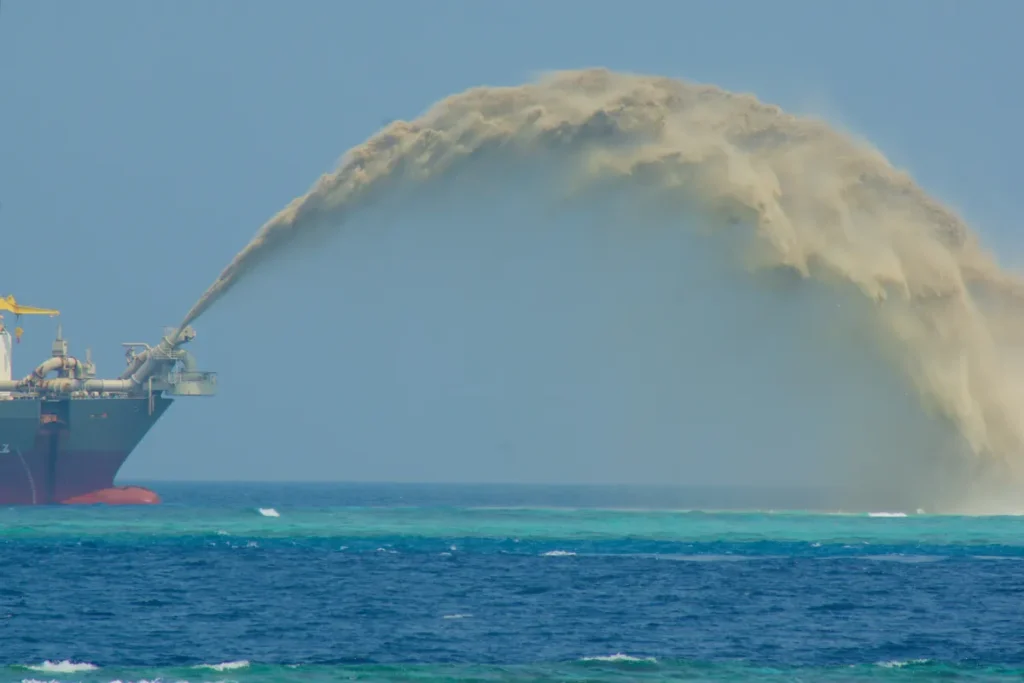
Hopper dredging, while essential for infrastructure and coastal resilience, can impact marine ecosystems if not carefully managed. One of the most common environmental concerns is turbidity—the suspension of fine sediments in the water column during dredging and overflow. These sediment plumes can reduce light penetration, affect marine vegetation like seagrass, and smother benthic organisms. Additionally, suction and draghead activity can temporarily disturb habitats and displace bottom-dwelling species.
Another concern is the release of contaminants from polluted seabeds. In areas with industrial runoff or historical sediment pollution, dredging can remobilize heavy metals or hydrocarbons. Underwater noise generated by dredge pumps, thrusters, and engines may also affect marine mammals and fish that rely on acoustic signals. Furthermore, disposal of dredged material—particularly at sea—requires precise planning to ensure sediment is released in approved zones without altering water quality or harming sensitive ecosystems.
To minimize environmental impact, modern hopper dredging projects integrate monitoring and mitigation strategies. Real-time turbidity sensors, plume modeling software, and environmental monitoring vessels are used to track water quality. Eco-friendly dragheads, reduced overflow operations, and controlled dredging speeds help limit sediment dispersion. In sensitive marine environments, work is often restricted to specific seasons to protect spawning or migration periods. Other mitigation measures include silt screens, relocation of marine life, and careful placement of dredged material in engineered containment areas or for beneficial use, such as wetland restoration or beach nourishment.
Regulatory agencies often require environmental impact assessments and continuous monitoring throughout the project, ensuring compliance while encouraging more sustainable dredging practices. As marine regulations tighten globally, hopper dredging is increasingly shifting toward low-impact methods, smart automation, and environmentally responsible material reuse.
Regulations Governing Hopper Dredging Activities
Hopper dredging operations are governed by strict regulatory frameworks to protect marine ecosystems, ensure navigational safety, and manage dredged material responsibly. Before a project begins, environmental impact assessments (EIAs) are often required to evaluate sediment composition, marine habitats, potential pollution risks, and effects on local communities. These assessments form the basis for obtaining dredging permits and disposal licenses from national and regional authorities.
International regulations also play a major role. The London Convention and its 1996 Protocol oversee the dumping of dredged materials at sea, ensuring only approved, non-hazardous material is disposed in designated areas. MARPOL (International Convention for the Prevention of Pollution from Ships) regulates waste discharge, fuel emissions, and oily water separation on hopper dredgers. In the European Union, the Marine Strategy Framework Directive, Water Framework Directive, and Natura 2000 guidelines require that dredging activities align with ecological protection standards. In the United States, permits from agencies such as the U.S. Army Corps of Engineers, the EPA, and state coastal authorities are mandatory.
Compliance doesn’t end with documentation—continuous monitoring is essential throughout dredging operations. This includes turbidity measurements, water quality sampling, sediment testing, and monitoring of spills or overflows. Hopper dredgers are often equipped with AIS (Automatic Identification System) tracking and onboard data logging systems to record dredge locations, quantities removed, and disposal activity for auditing purposes. Non-compliance can lead to penalties, project delays, or operational shutdowns. Increasingly, governments are encouraging or mandating the beneficial reuse of dredged material for projects like wetland restoration, land reclamation, or coastal defense, aligning compliance with sustainability goals.
Technology and the Future of Hopper Dredging
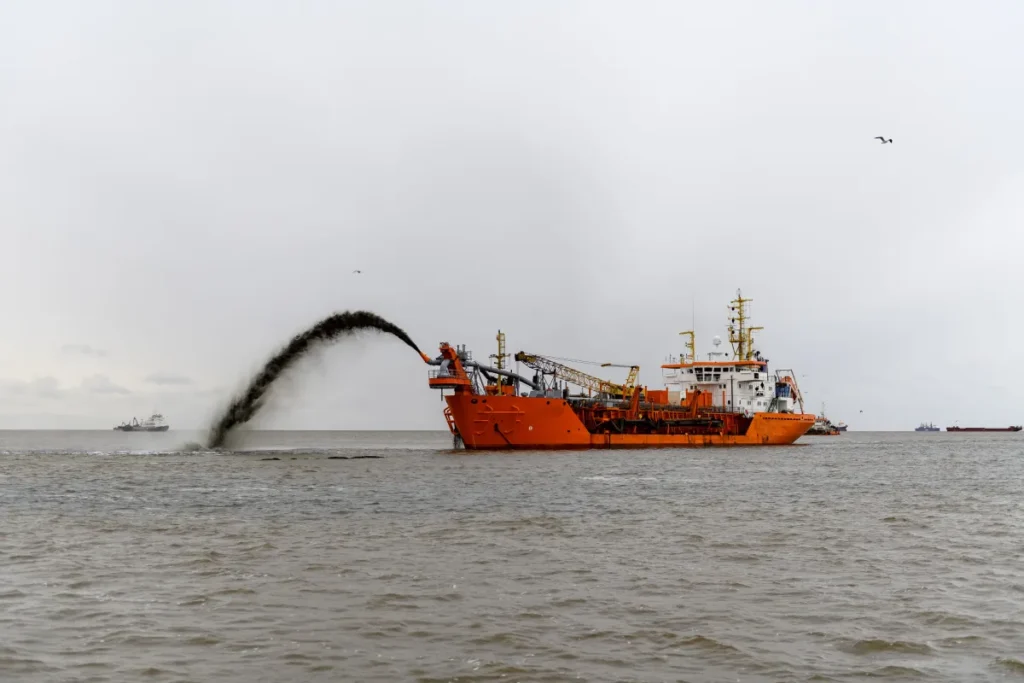
The future of hopper dredging is being shaped by digital innovation, automation, and sustainability-driven engineering. Modern trailing suction hopper dredgers are increasingly equipped with advanced control systems that monitor dredging depth, suction pressure, hopper load density, and fuel consumption in real time. These smart systems allow operators to optimize draghead positioning, reduce overflow losses, and maintain consistent dredging performance, even in challenging seabed conditions.
Artificial intelligence and machine learning are also emerging in dredging operations. AI-assisted navigation enables more precise draghead control, while predictive maintenance systems—powered by sensors and digital twin technology—forecast wear on pumps, pipelines, and engines before failures occur. Dynamic positioning systems (DPS) and GPS-guided automation enable hopper dredgers to maintain precise paths during seabed dredging, improving accuracy and reducing fuel costs. Some vessels are adopting hybrid propulsion or LNG-powered engines to meet emission regulations, lower CO₂ output, and reduce reliance on diesel.
Looking ahead, the industry is moving toward autonomous dredging vessels, remotely operated control centers, and fully integrated digital workflows. Environmental sustainability is also driving innovation, with eco-dredging technologies such as low-turbidity dragheads, real-time plume modeling, and controlled overflow strategies. Beneficial reuse of dredged material—such as creating wetlands, flood barriers, or land reclamation—will become a core part of future project planning. As global demand for deeper ports, coastal protection, and offshore energy continues to grow, hopper dredging will evolve through smarter vessels, cleaner propulsion systems, and environmentally responsible practices.
Shaping Coastlines and the Future of Marine Development
Hopper dredging is more than just sediment removal—it is a strategic tool that sustains global commerce, strengthens coastal defense systems, and enables future-ready marine infrastructure. As technology evolves and environmental standards rise, the focus is shifting toward smarter, cleaner, and more sustainable dredging practices. At Lone Star Dredge, we understand the challenges involved in marine development and coastal maintenance. Whether you need support with hopper dredging equipment, project planning, or customized dredging solutions, we’re here to help you build safer waterways and stronger shorelines.
